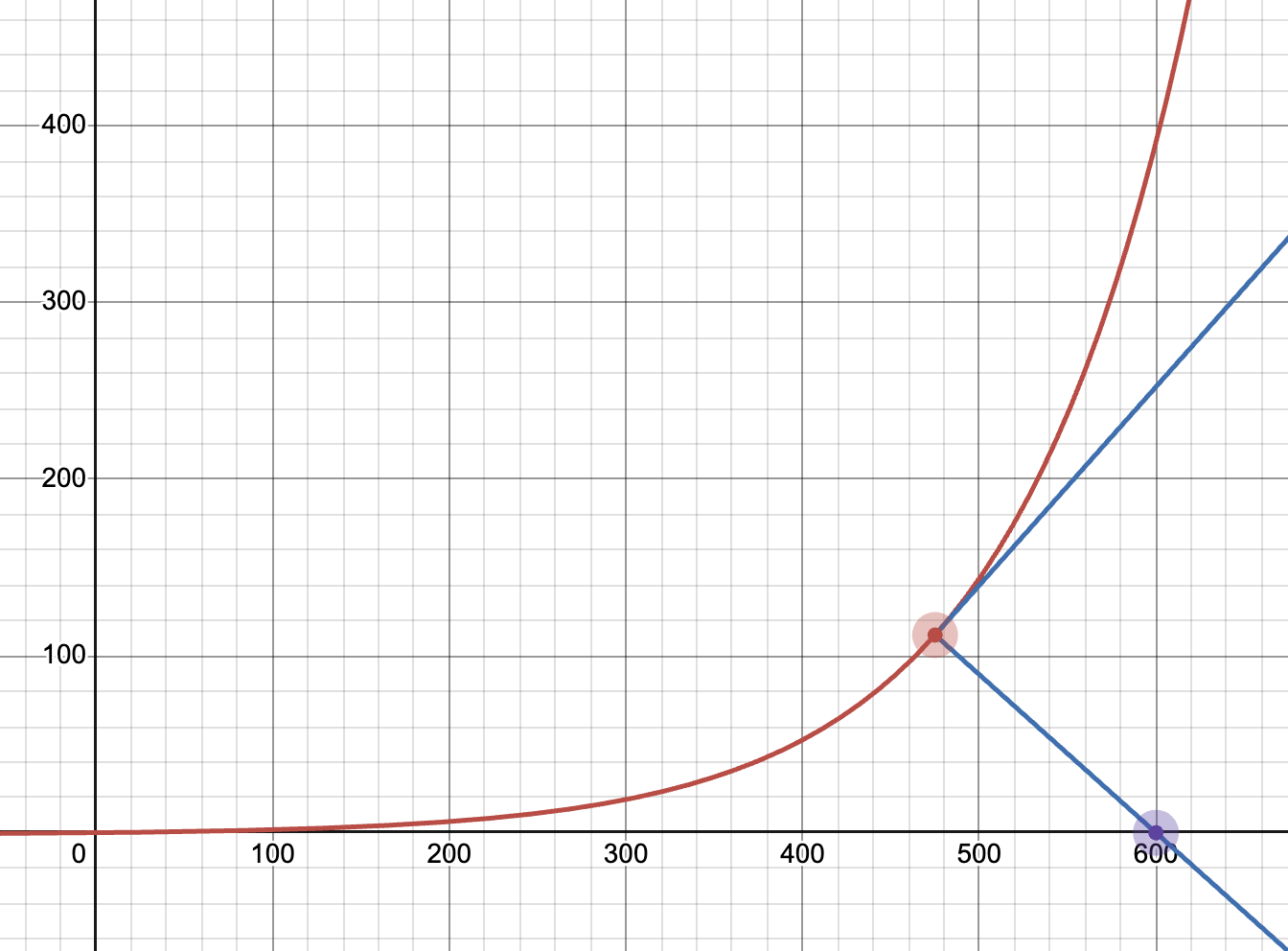Course-correcting early and often
The longer one waits to calibrate and align one's direction of travel toward the same destination as at the outset of the voyage, the more the inevitable course correction will feel to all the sailors like the ship has completely changed course. For example, if the desired destination is due east for 600 days’ travel, but the ship is off course by 1% each day, after about 475 days, the required course correction to redirect back to the original destination would be a 90-degree turn. Regardless of how abrupt such a course correction would be, this is the last point in the trajectory where the ship can change course without needing to regress from its trajectory in order to achieve its original destination.
How does this kind of thing happen? It can occur when the ship’s course is set based on its current trajectory, rather than on a fresh realignment with the destination. It can also occur when the rudder is locked into position in what is presumed to be on course, but is actually 1% misaligned with the actual destination. It is almost impossible to detect a 1% variance in trajectory, giving the illusion that everything is as it should be and that the ship is on course as planned. The drift off course may not even be noticed, especially as it happens so slowly (right up until it happens very rapidly).
What will happen when the decision is made to change course to the initial destination? The crew, only aware of their current trajectory and assuming that they have been “on the same course” for the duration of the journey, will almost certainly be unaware of the deviance between their trajectory and their destination. The fact that their trajectory will never arrive at their desired destination may not be evident to them. Thus, a course correction back to the original destination will feel to them like “mission creep” or “pivoting away from what we set out to do.”
The solution is to take frequent bearings from the ship’s current location to the destination without reference to current trajectory and then change course early and often. The more often these bearings are taken and the ship’s course reset to the same destination, the less abrupt the change in course will be. It may not even be noticeable.

See: https://www.desmos.com/calculator/fow5t4gqkm
Notes:
- After 265 days, ~10 degree course correction to original objective.
- After 600 days, ~165 degree course correction needed.
#strategic #systems-thinking #organizations
See also: